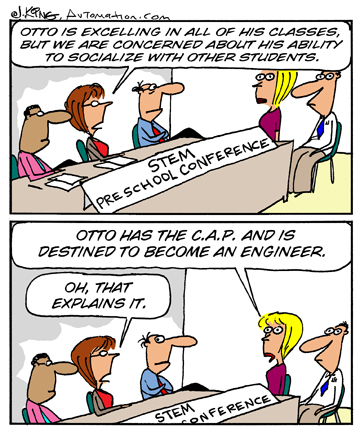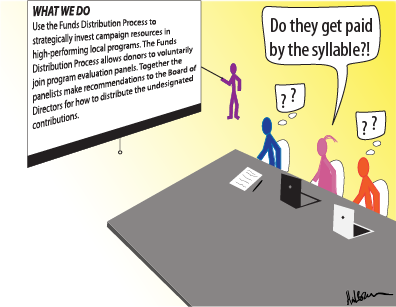Humanizing Special Ed
It’s easy for parents and educators alike to get lost in the Individualized Education Program (IEP) process and the numerous Individuals with Disabilities Education Act (IDEA) regulations. In an IEP meeting stuffed full of lawyers, speech therapists, occupational therapists, educators, and administrators, where exactly does your child fit in? Sure, the entire meeting is about his speech disorder and particular needs, but in a sea of acronyms (ESY, FAPE, S/LI, and TSS, to name just a few) it can be easy for the IEP team to forget that there is an actual child at the heart of all that jargon. No one knows your child and his speech therapy needs better than you and your partner. You’ve looked after his health from conception onward and made sure he had everything from healthy foods to speech therapy tools. So when it’s time to advocate for him in an IEP meeting and elsewhere at school, make sure that the people who are discussing his education actually know who he is.
Connecting with Teachers
Yesterday’s interview with Gavin Bollard, father of two children with autism spectrum disorder (ASD), touched on this subject briefly. At the start of each school year, Gavin provides his sons’ teachers with a letter that describes their nuances and triggers. In our interview, he pointed out that while meetings with teachers are great, many teachers are simply too short on time to connect with parents regularly. Providing the teachers with a brief, written document can be quite effective. Gavin further recommended laminating the letter to encourage longevity.
This “at-a-glance” document can also work well for briefing teachers on the contents of a student’s IEP. While it’s best for teachers to read the full IEP, it can be difficult to keep track of the details throughout the school year, particularly if several students in the classroom have IEPs. The “at-a-glance” document should have your name and contact information, along with any other special health concerns of your child. Include the IEP’s goals and objectives, any accommodations your child is entitled to receive, and brief descriptions of your child’s strengths and weaknesses. For example, you might remind the teacher that your child will need directions provided verbally and in writing.
Connecting with the IEP Team
Throughout your child’s school years, you’ll meet with the IEP team numerous times. Add personal touches to the meeting so that you and your child will stand out more clearly in their minds. Author Judy Winter (“Breakthrough Parenting for Children with Special Needs”) recommends taking snacks or beverages to the meetings. During such an exhausting ordeal, everyone will appreciate a big carton of coffee from Dunkin’ Donuts or some homemade banana bars.
After you’ve broken the ice with tasty treats, use props to show the IEP team exactly who your child is. Some parents create a PowerPoint slideshow with photos of their child and brief descriptions of his likes and dislikes. Others use scrapbooks. You might also consider bringing in a sound recording of your child’s speech. For example, if he struggles with articulation, bring in sound clips that demonstrate this.
Jean Winegardner creates an introductory packet about her son, Jack. This packet includes a photo of Jack, information on his likes and dislikes, strengths and weaknesses, and which areas he needs extra help with. She also includes quotes from Jack’s evaluations and discusses Jack’s goals. Winegardner concludes the introductory packet by asking the IEP team to help Jack become happy and successful.
Whether you choose to create a “Welcome to My Child” packet, a PowerPoint slideshow, or a scrapbook, all of these methods can help humanize the special education process. Multimedia and personal touches can help to reinforce your child’s needs more effectively than words and jargon alone.





